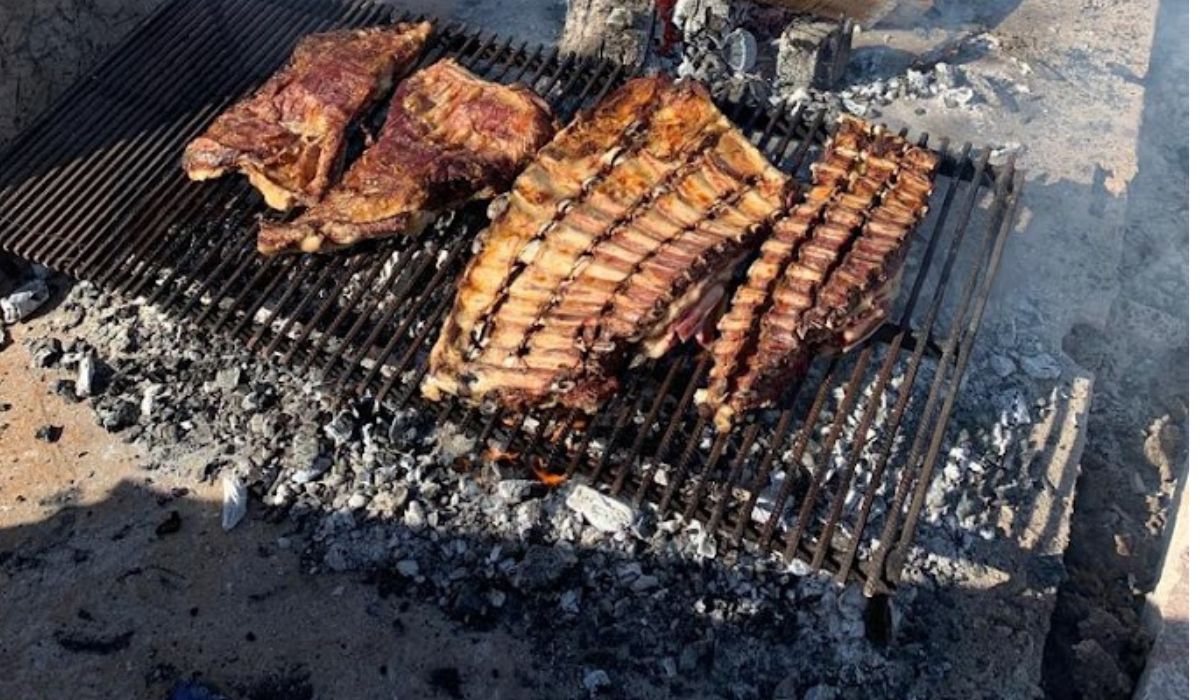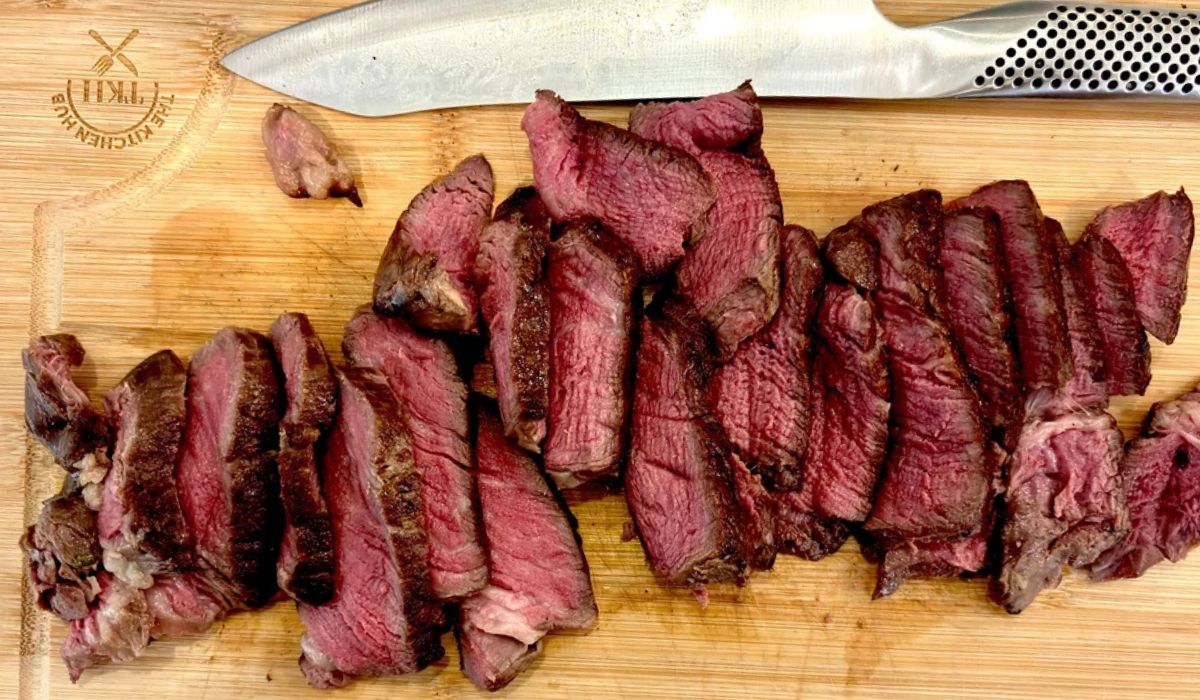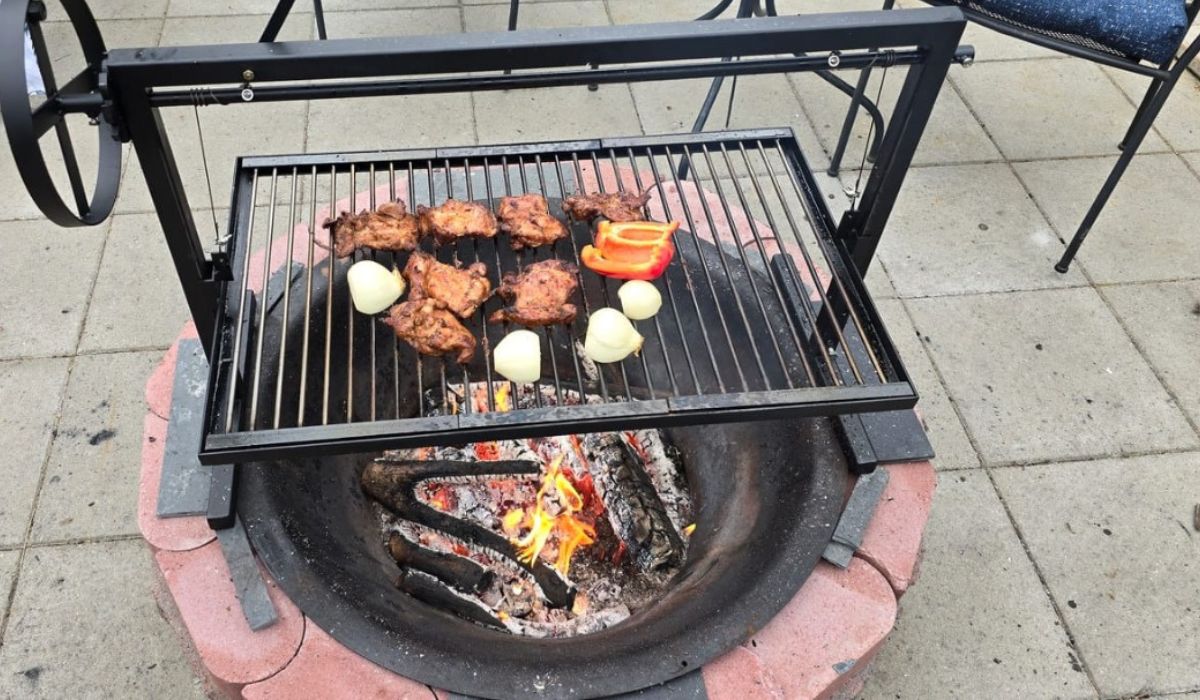
The Duel of Wood-Fired Legends: Santa Maria vs. Gaucho Style
Outdoor grilling has been part of humanity’s DNA since the earliest days. Across continents, generations, and cultures, it has evolved into unique traditions of preparing and savoring fire-fueled meals.
Two of the most iconic of these traditions are Santa Maria BBQ and Argentine asado. In recent years, both have experienced a surge in popularity here in the U.S.
While there’s no denying the growing appetite to learn about (and taste) these styles, one wonders, beyond a shared passion for live-fire flavor and deep countryside roots, how similar are they really?
In this article, we’ll break down the key differences and similarities between Santa Maria style and Argentinian grilled meat, from their origins and cooking methods to the gear, rituals, and cultural meaning behind them.
We’ll also highlight the essential elements to consider when choosing which tradition best fits your backyard. Because at Gaucho Life, we know it’s more than just grilling. It’s a lifestyle.

Fire, History, and Community
First things first: these two grilling styles share a similar philosophy rooted in fire, history, and community. Santa Maria grilling was born on 19th-century California cattle ranches, while Argentinian asado originated around the same time with the gauchos, South American cowboys who roamed the Pampas and sometimes worked on estancias.
At their core, asados and Santa Maria BBQs are social gatherings, where conversation around the fire is just as important as the meat cooking over white-hot embers or open flames. Grilling techniques are passed down through generations, keeping a living heritage alive.
Unlike typical U.S. BBQ, Santa Maria and Argentinian grilled meats are lightly seasoned. The flavor of the meat itself takes center stage, enhanced subtly by charcoal or hardwood smoke and a few herbs.
But here’s where the similarities end.
A central part of the Central Coast’s Santa Maria tradition is the Santa Maria tri-tip, often served with pinquito beans and salad. Asado, on the other hand, thrives on variety. Instead of focusing on a single cut, multiple cuts are grilled to give guests a range of textures and flavors in one meal.
This difference shapes the cooking styles. In Santa Maria BBQs, meat is seared quickly over an open flame. In Argentinian asado, cooking depends on the cut: some, like ribs, require hours of slow cooking — the kind of patience and craft you’d use in an Argentine Cross-Style BBQ —, while others, like skirt steak, are grilled quickly over white-hot coals.
Santa Maria and gaucho grills reflect these approaches, with design elements tailored to their respective traditions. Curious which features define each style? Jump to the next section to find out.
You may also like: Learn how to grill picanha like an Argentine asador and elevate your BBQ game.
Anatomy of a Grill: How Santa Maria and Gaucho Parrillas Work
Both Santa Maria and Argentinian parrillas feature an open-frame design and run on wood-based fuel, either hardwood logs or lump charcoal. This produces a distinct smoky finish: red oak for Santa Maria BBQ, and quebracho for most Argentine asados.
Because Santa Maria BBQs cook directly over an open flame, they usually develop a more intense smokiness and a crispier crust. However, asados tend to have a milder flavor profile, with the focus less on the crust and more on the meat’s juiciness.
Because they demand live-fire management, these grills offer a more hands-on experience, which is a big part of their appeal… and also a drawback for anyone who prefers the simplicity of gas or electric grilling. For those who cherish not only wood-fueled meals but also the ritual of tending the fire, the reward is more than worth it.
As mentioned, the grills typical of California’s Central Coast and Argentina reflect the grilling techniques of their regions. That means there are some key differences in both their appearance and performance:
-
Santa Maria grill stand out for their adjustable-height grate system, manually controlled by a crank. This allows precise heat management and versatility, making it perfect for quick, intense searing or indirect cooking when needed.

-
Argentinian grills, in contrast, feature a large, minimalist surface. They sit close to the coals (about six inches above), and their V-shaped grates channel fat away, preventing flare-ups. They are often paired with a side brasero to maintain a constant supply of embers.

As many born stans of the Gaucho grilling style, some years ago, we had an epiphany when we discovered that Santa Maria grills were a thing. Not a day had passed, and we were dreaming about a setup that combined the best of both grill types.
Soon we realized we weren’t alone. A hybrid approach has quietly been taking root among BBQ and Asado enthusiasts. An approach that, at Gaucho Life, we like to call the “Santa Maria argentine grill.”
What does it look like? A Santa Maria–style adjustable structure, complemented by a side iron brasero and V-shaped grates for flare-up control.
How does it perform? Simply heavenly. There’s no other word for it.
Want to dive deeper? Check out our article: Beginner’s Guide to Grilling for everything you need to light your fire with confidence.
Materials & Craftsmanship
If there’s one more thing Santa Maria and Gaucho grilling styles share, it’s the quality of their gear. And that should come as no surprise, given the role BBQs and asados play as vessels of two of the world’s proudest and most demanding grilling traditions. Low-quality grills simply aren’t up to the task. At Gaucho Life, we know this well enough.
Both Santa Maria and Gaucho grills are often built with coated iron, prized for its unbeatable heat retention and appealing rustic look. In top-tier products, the steel gauges tend to be thick and thoroughly welded (ideally handcrafted) to prevent warping and to maximize heat retention.
Of course, iron requires consistent seasoning and care to prevent rust. That’s why Santa Maria or Argentinian iron grill sets are often viewed as specialized gear, ideal for those who want outstanding, authentic results and don’t mind the extra upkeep.
Modern setups, on the other hand, are frequently built with 304 stainless steel. As with iron grills, gauge thickness and quality welding are key indicators of performance and longevity.
Stainless steel performs especially well in humid or coastal regions, but it too requires attention: wiping down the grates after each use (particularly V-shaped bbq grills) and storing the grill under a weather-resistant cover are essential steps to keep it in top shape.
| Feature | Santa Maria Grill | Gaucho Grill (Parrilla) |
|---|---|---|
| Fire Management | Direct under grate | Brasero side firebox, embers raked |
| Grate Type | Flat, round bar | V-grate, angled to channel fat |
| Cooking Style | Hot & fast (tri-tip, steaks) | Slow & steady (ribs, whole animals) |
| Flavor Profile | Intense smoke, crisp char | Clean smoke, rich juices |
| Materials | Iron or 304 stainless steel | Iron or 304 stainless steel |
| Ease of Use | Simple, visual fire control | Steep learning curve |
Curious about hardwoods and fire control? Don’t miss our detailed guide on charcoal grills - a must-read for those embracing the hands-on experience of live-fire cooking.
The Wood-Fired Enthusiast’s Accessories’ Checklist
No fire-fueled tradition is complete without the right set of tools to take grilling to the next level. As fans of both Santa Maria and Argentinian grilling, here’s our pick of must-have accessories for getting the most out of these cooking techniques:
-
Fire management equipment. Tending the fire and controlling the heat requires fire-resistant tools for arranging embers, breaking down large charcoal lumps, and clearing ash buildup. Most of the time, an iron shovel and a poker are all you need.
-
Griddle or grill plancha. Perfect for expanding your range and cooking smaller, more delicate items (like grilled sweetbreads) that might otherwise slip through the grates. Meat hooks and iron baskets can be good alternatives, though they aren’t as versatile.
-
A knife and fork carving set. Precision matters. A quality gaucho knife set allows you to cut confidently through meat, always slicing against the grain to maximize tenderness.
-
Wood and charcoal tips. Different hardwoods deliver different smoke profiles (red oak for Santa Maria, quebracho for Argentine asado). Use them to infuse your meals with flavor once you’ve mastered your Santa Maria grill
Curious just how versatile a Santa Maria grill can be? Check out our featured article: The Hot Take: Smoker vs. Grill.
FAQs
Still curious about the differences and similarities between Santa Maria and Argentinian grills? Here are answers to some of the most common questions we hear. If yours isn’t here, feel free to reach out. We’re always happy to help!
What’s the real difference between Santa Maria and Gaucho grills?
Santa Maria grills feature adjustable-height grates, controlled by a crank, for managing temperature and fire. They cook over direct flame, delivering fast grilling and smoky results.
Gaucho grills, on the other hand, have fixed-height, V-shaped grates that channel fat drips away to prevent flare-ups. They are usually paired with a side brasero for a steady supply of embers, perfect for long grilling sessions.
Can’t decide your fire? Check out our Pellet Grill vs Charcoal Grill comparison.
Can I cook both “hot and fast” and “slow and low” on one grill?
Yes. Both Argentinian and Santa Maria grills allow you to master both techniques (quick searing as well as slow cooking) by adjusting grate height and managing ember production.
Curious about different South American grill styles? Don’t miss our breakdown of Brazilian Churrasco vs Argentine Asado.
Which is easier for beginners to use?
Santa Maria grills tend to offer a more intuitive learning curve. Gaucho grills can be more complex, but once mastered, they deliver incredible control and versatility.
Hybrid models, such as Gaucho Life’s Argentine Santa Maria grill, combine a simpler fire-management system with V-shaped grates and a side brasero, adapting seamlessly to different skill levels.
Want to dive deeper into sirloin cuts? Don’t miss our full guide on Tri-Tip vs Picanha.
How do I care for and maintain my grill?
To extend your grill’s lifespan, it’s key to clean the grates after every use, season regularly (especially if it’s iron), and store it under a weather-resistant grill cover.
Want to dive deeper? Check out our article: How to Keep Grill Grates from Rusting.

Firing Up A Tradition of Your Own
Few grilling traditions are as vibrant today as Santa Maria BBQ and Argentine asado. Similar yet distinct, both are rooted in community, storytelling, and the unmistakable flavor that only wood and fire can bring.
Whether you’re drawn to the timeless simplicity of Gaucho grill or the smoky versatility of Santa Maria, there’s a grill that fits your taste and your backyard.
Setup, model, materials… Those details matter. But at Gaucho Life, we know that what truly defines the experience is that glowing bed of coals, the aroma of meat in the air, and the laughter of friends gathered around the fire.
Explore our collection of handcrafted grills and accessories, and start a grilling tradition you can call your own. Unlock the joy of fire-fueled meals and gatherings that become lasting memories.
Because in the end, it’s more than just grilling. It’s a lifestyle.





Dejar un comentario
Este sitio está protegido por hCaptcha y se aplican la Política de privacidad de hCaptcha y los Términos del servicio.